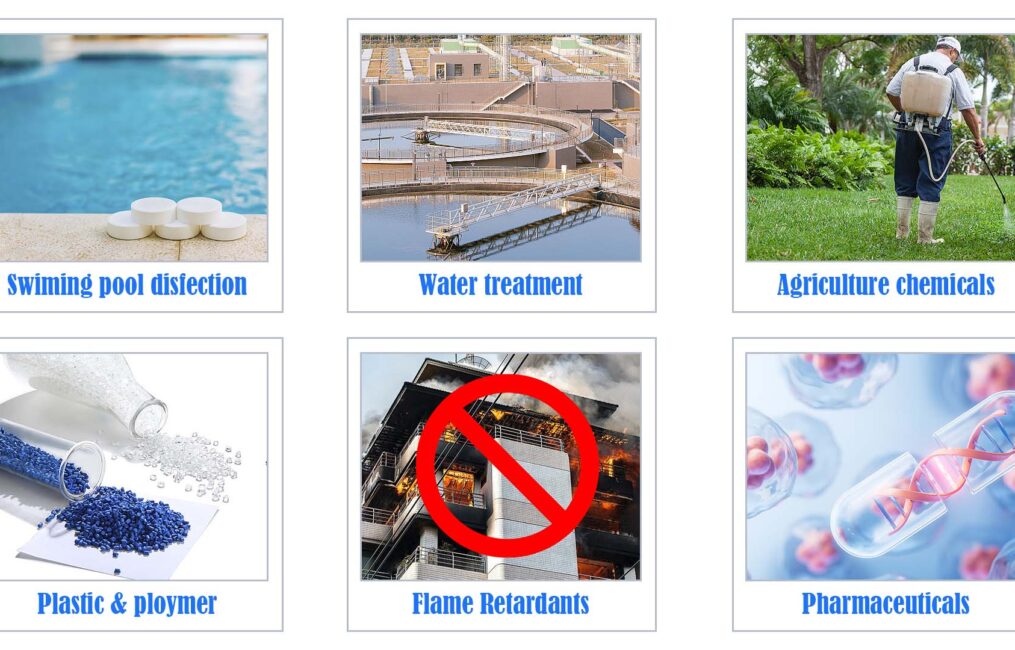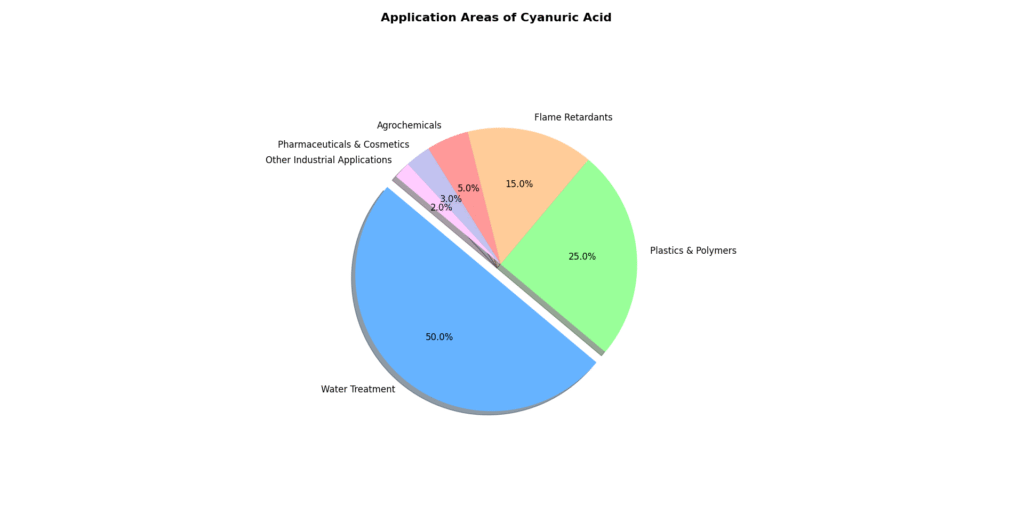Ácido cianúrico: o herói anônimo no tratamento de água, plásticos e muito mais
O ácido cianúrico (C₃H₃N₃O₃) é um composto orgânico versátil que desempenha um papel crítico em diversas indústrias. Da estabilização do cloro em piscinas ao aumento da durabilidade de plásticos e à atuação como retardante de chamas, suas aplicações são vastas e impactantes. Você sabia que quase 50% de seu uso é dedicado ao tratamento de água, onde garante água limpa e segura para piscinas e sistemas de abastecimento de água? Outros 25% são destinados a plásticos e polímeros, aprimorando materiais usados em tudo, desde eletrônicos até construção. O ácido cianúrico também se destaca na agricultura, produtos farmacêuticos e até cosméticos, tornando-se um verdadeiro multitarefa. No entanto, seu uso requer gerenciamento cuidadoso para evitar problemas ambientais como o "bloqueio de cloro". Mergulhe neste artigo para explorar como o ácido cianúrico impulsiona as indústrias modernas e por que ele é um pilar da inovação e da sustentabilidade. Seja você um cientista, profissional da indústria ou apenas curioso, você descobrirá por que este composto é tão indispensável!

Cyanuric acid is an essential organic compound with a broad spectrum of applications across various industries. Its unique properties make it a key component in water treatment, plastics, flame retardants, agricultural chemicals, pharmaceuticals, and more. Below is a breakdown of its primary applications and their typical market shares based on industry data.

| Application Area | Share |
|---|---|
| Tratamento de Água | 50% |
| Plastics and Polymer Materials | 25% |
| Flame Retardants | 15% |
| Agricultural Chemicals | 5% |
| Pharmaceuticals and Cosmetics | 3% |
| Other Industrial Applications | 2% |
1. Water Treatment (Approx. 50%)
- Chlorine Stabilizer: In swimming pools, spas, and other water systems, cyanuric acid acts as a stabilizer for chlorine disinfectants. It slows down the decomposition of chlorine under UV light, extending its effectiveness.
- Disinfectant Precursor: Cyanuric acid is a key raw material for synthesizing sodium dichloroisocyanurate and trichloroisocyanuric acid, which are widely used as efficient pool disinfectants to kill bacteria and algae while maintaining water cleanliness.
- Drinking and Industrial Water Treatment: Derivatives like trichloroisocyanuric acid are also used in drinking water and industrial water treatment systems for long-lasting disinfection.
2. Plastics and Polymer Materials (Approx. 25%)
- Crosslinking Agent: Cyanuric acid derivatives, such as isocyanurate esters, are used as crosslinking agents in the production of polyester resins (e.g., unsaturated polyester). They enhance the thermal resistance, chemical corrosion resistance, and mechanical strength of materials, making them ideal for coatings, adhesives, and fiberglass-reinforced plastics (FRP).
- High-Temperature Materials: Cyanuric acid-modified resins are used to manufacture electronic component encapsulants, insulation parts, and other high-performance materials.
3. Flame Retardants (Approx. 15%)
- MCA Flame Retardant: Cyanuric acid reacts with melamine to form melamine cyanurate (MCA), an eco-friendly flame retardant. MCA is widely used in nylon, polyolefins, rubber, and textiles, where it inhibits combustion by releasing inert gases.
4. Agricultural Chemicals (Approx. 5%)
- Herbicide Intermediate: Cyanuric acid serves as a raw material for synthesizing triazine herbicides (e.g., atrazine), which regulate plant growth or suppress weeds.
- Slow-Release Fertilizers: When combined with nitrogen fertilizers, it helps slow down nitrogen release, improving fertilizer efficiency and reducing environmental impact.
5. Pharmaceuticals and Cosmetics (Approx. 3%)
- Pharmaceutical Intermediate: Cyanuric acid is used to synthesize antibacterial agents, antiviral drugs (e.g., certain HIV protease inhibitors), and nitrogen-containing heterocyclic compounds.
- Cosmetic and Detergent Additives: Some derivatives are used as stabilizers or slow-release components in cosmetics and detergents.
6. Other Industrial Applications (Approx. 2%)
- Dyes and Coatings: Cyanuric acid is used as an additive to improve the weather resistance and stability of dyes and coatings.
- Chemical Synthesis: It is a precursor for intermediates like cyanuric chloride, which are used in the production of pesticides, pharmaceuticals, and polymer materials.
- Metal Treatment: In electroplating solutions, it acts as an auxiliary agent to improve coating quality.
Key Considerations
- Environmental Impact: Excessive use of cyanuric acid can lead to environmental issues, such as “chlorine lock” in pools. Proper industry guidelines must be followed.
- Compound Forms: Most applications involve derivatives (e.g., esters, salts) rather than pure cyanuric acid, so the specific compound form must be chosen based on the application.
Cyanuric acid’s versatility and wide-ranging applications make it a vital compound in both industrial and everyday contexts. As technology advances, its potential continues to expand, offering new opportunities for innovation and sustainability.



